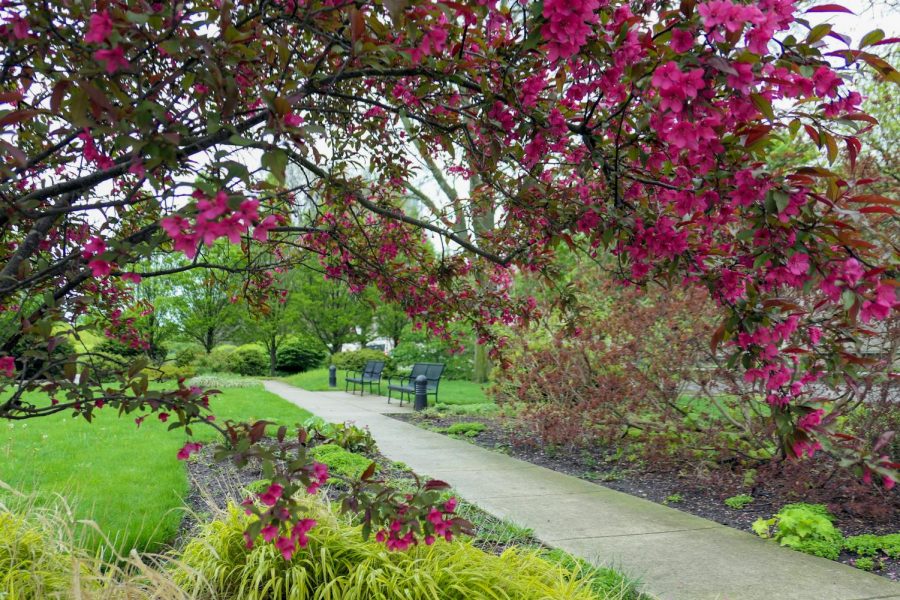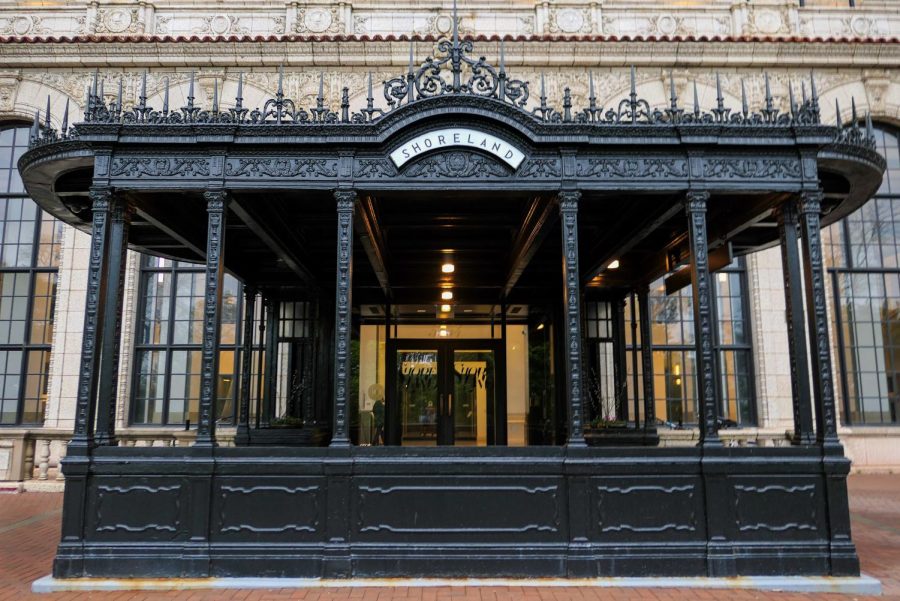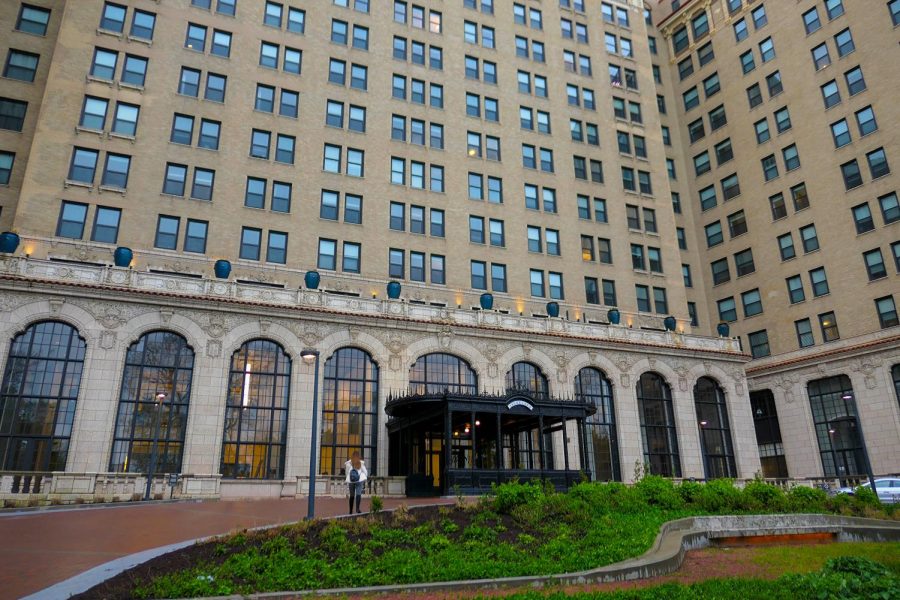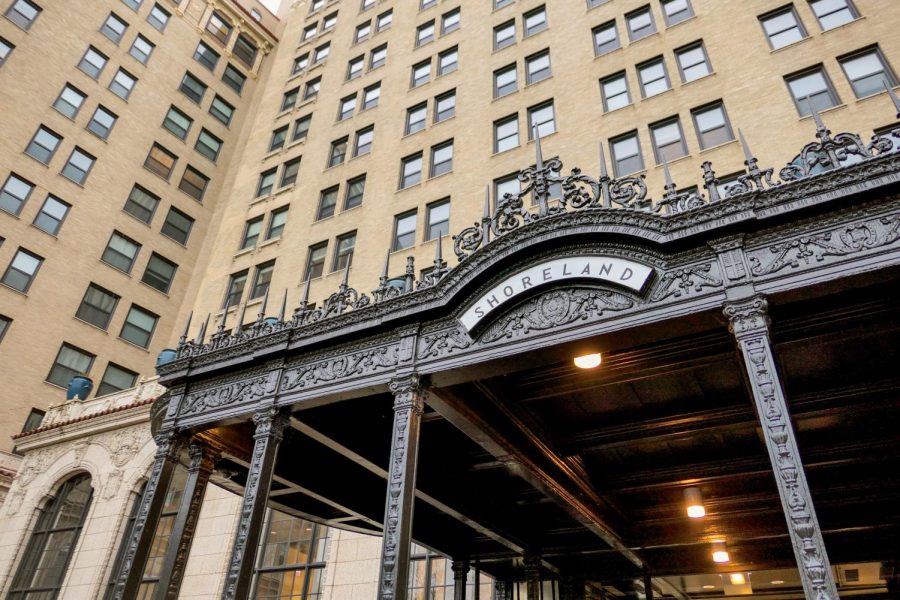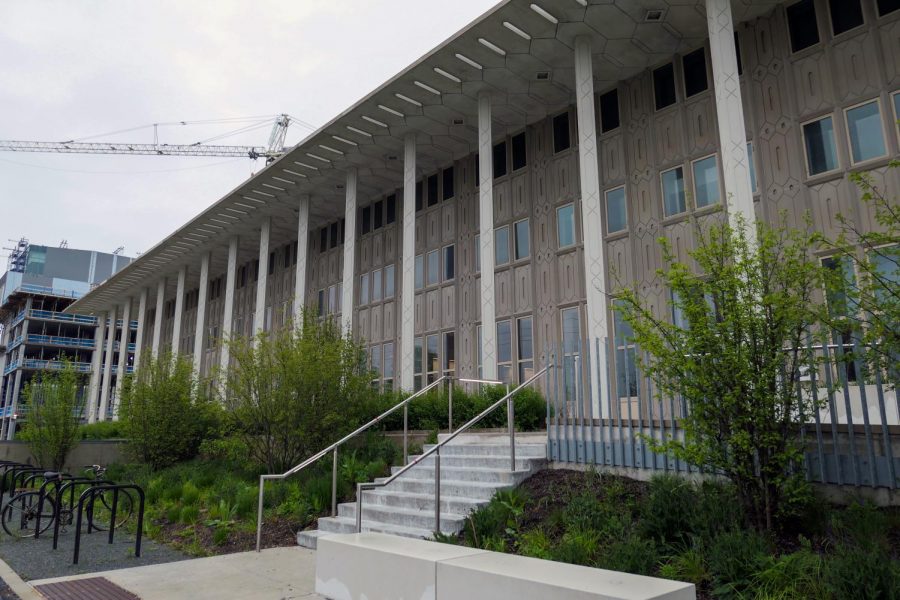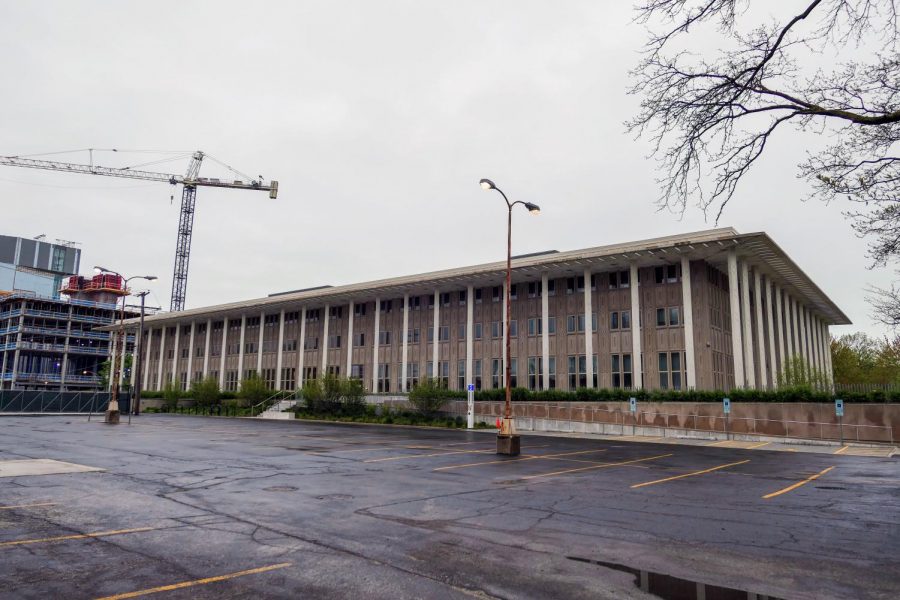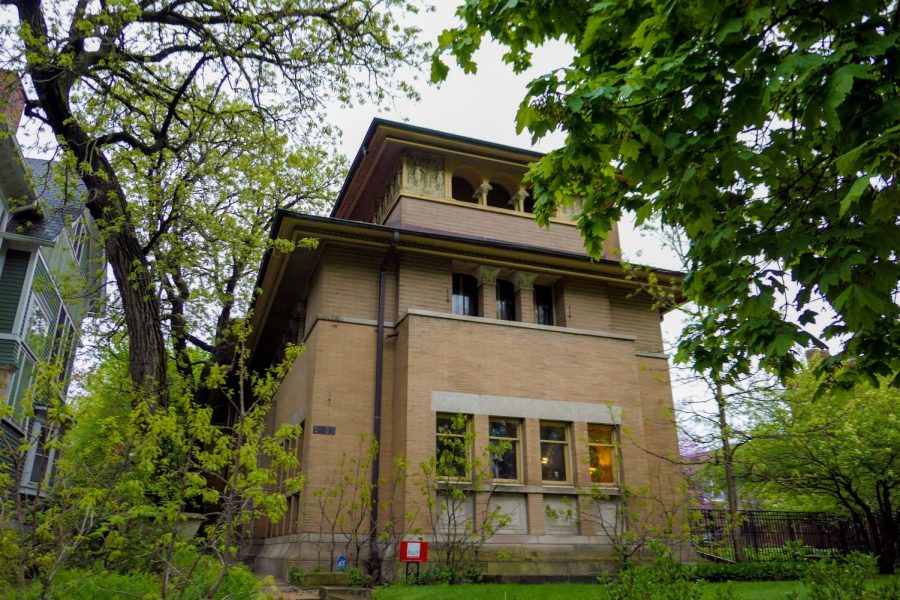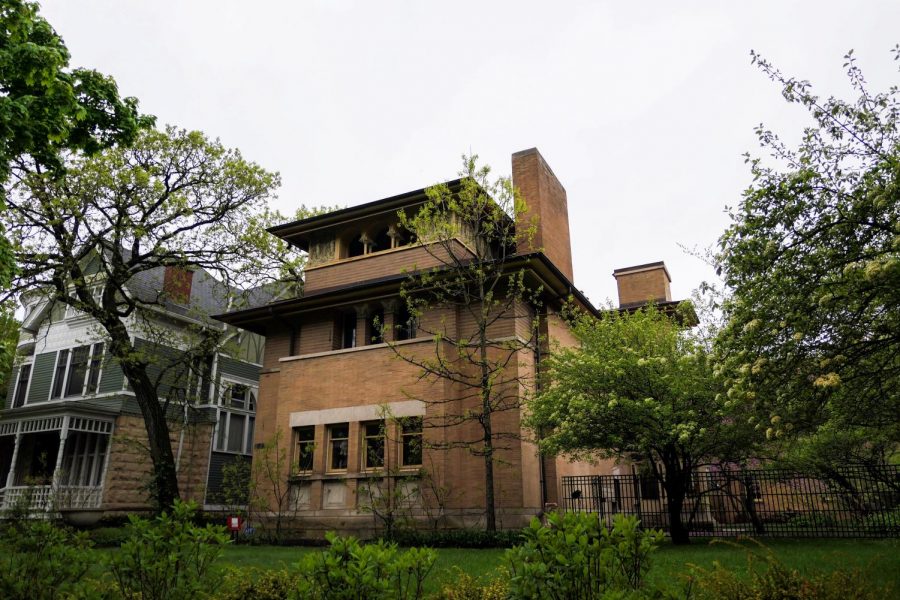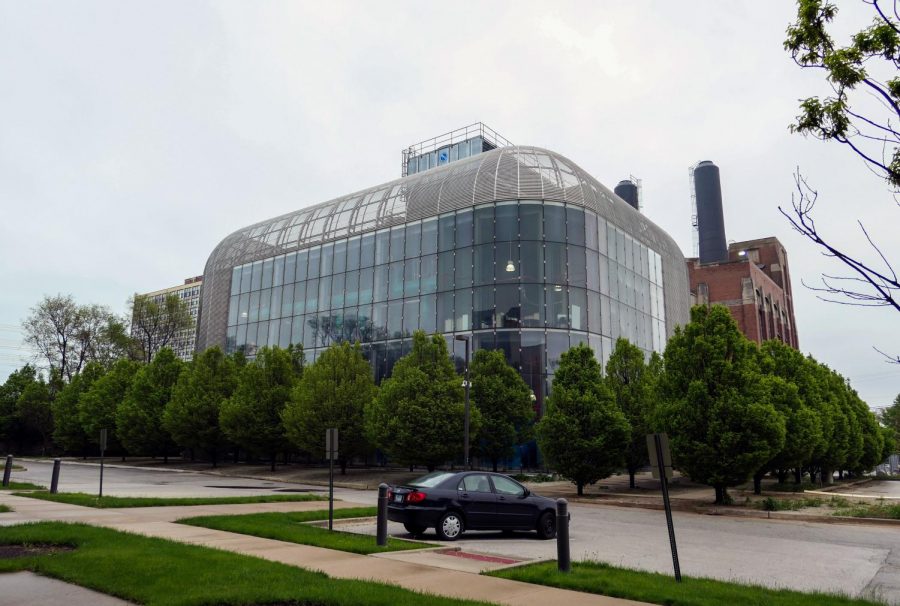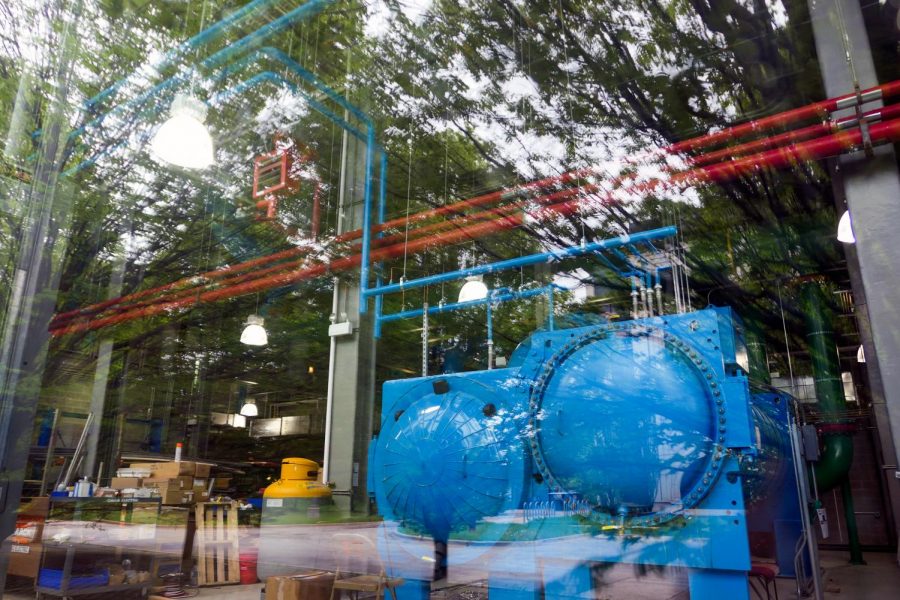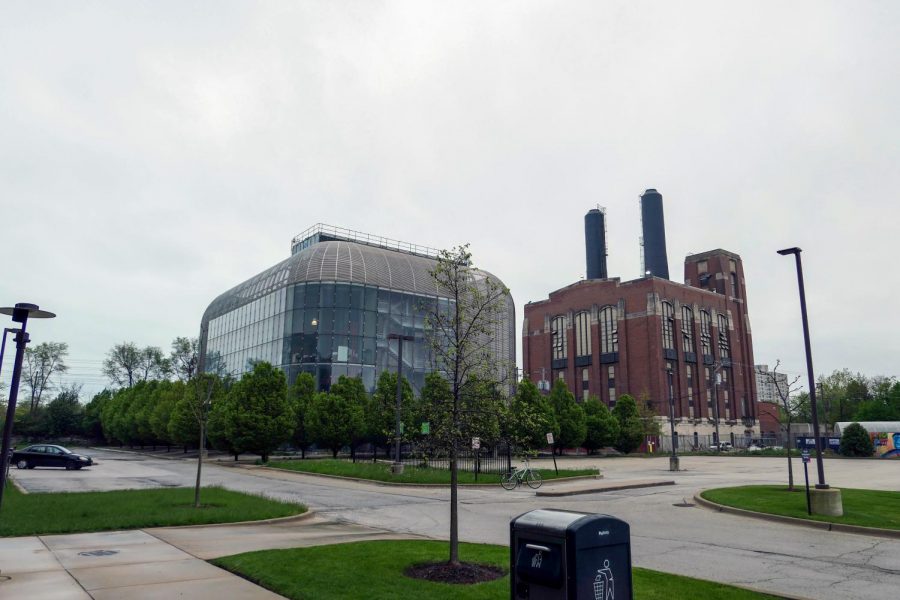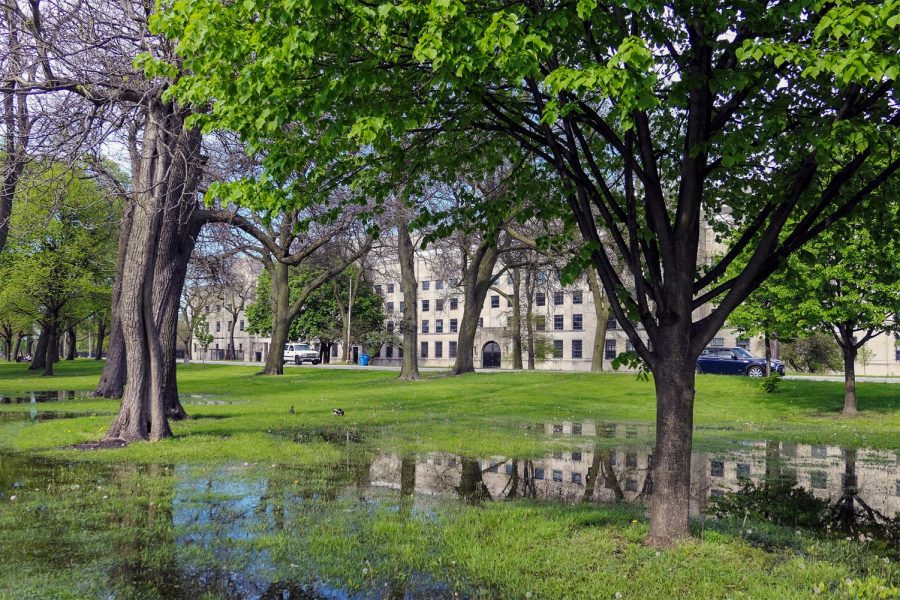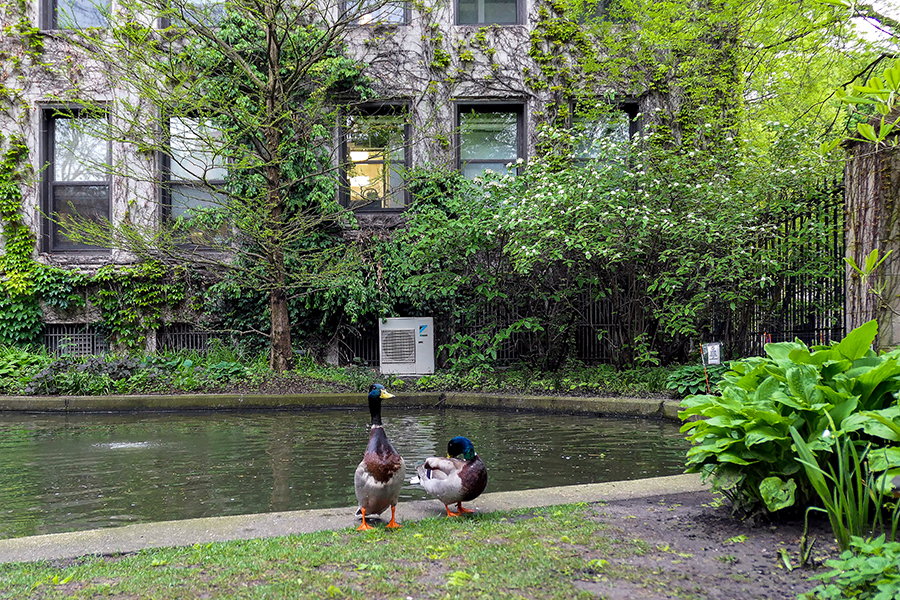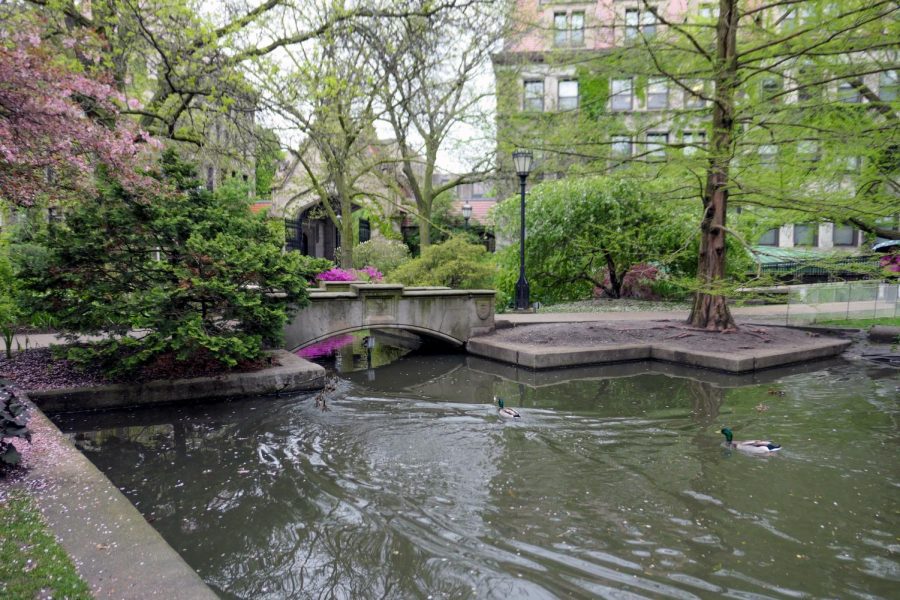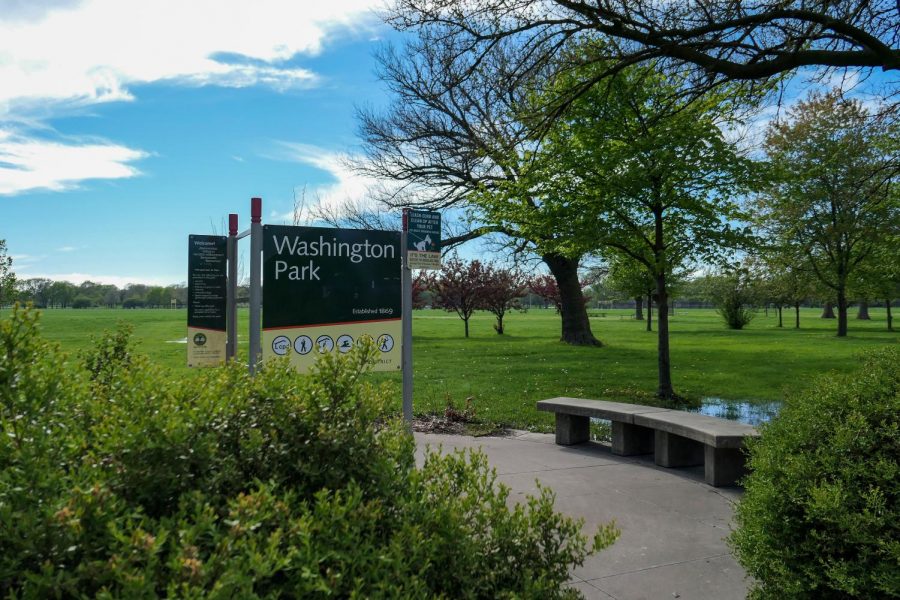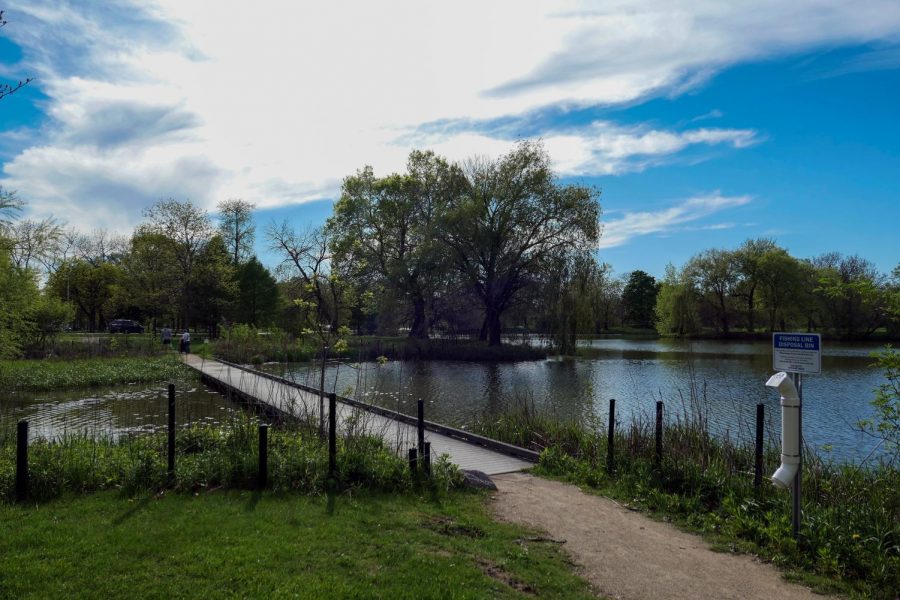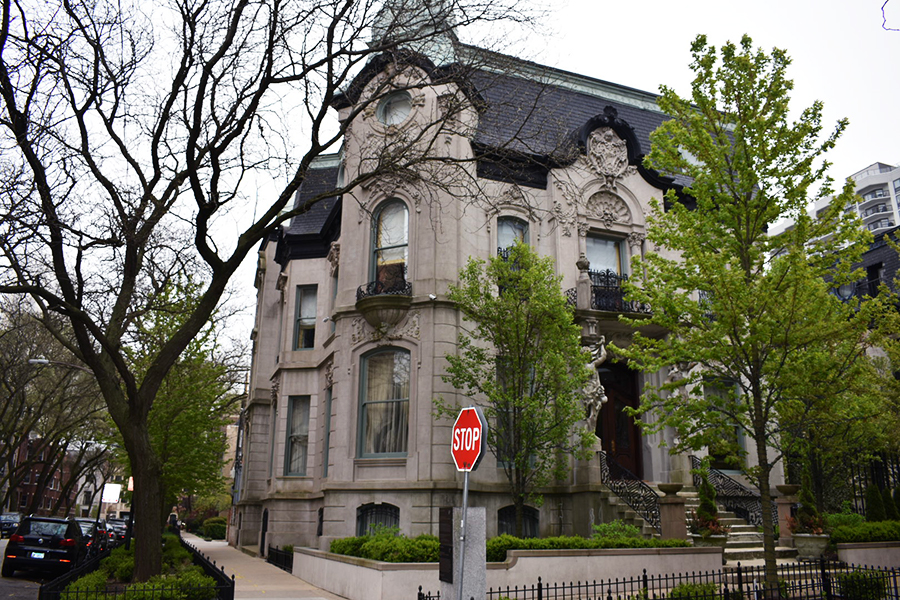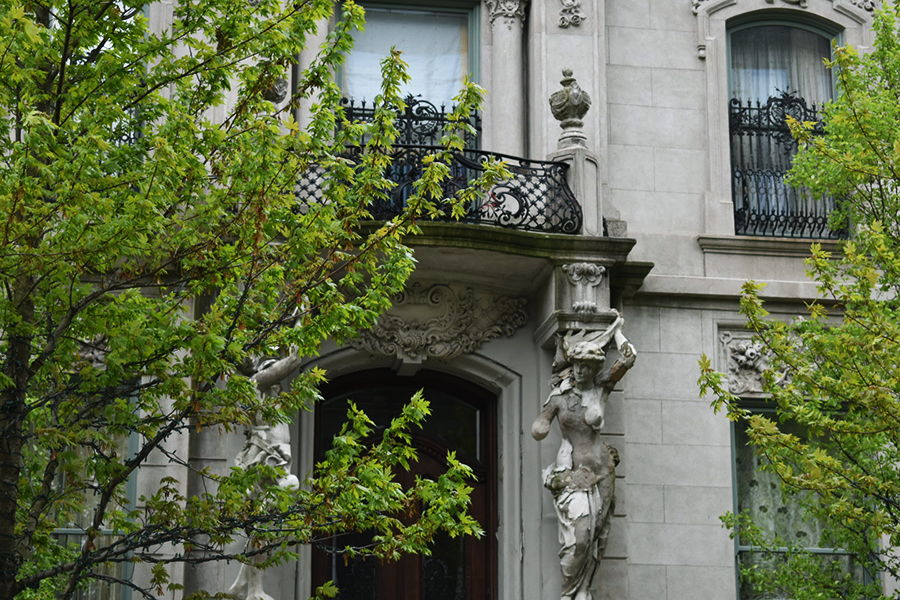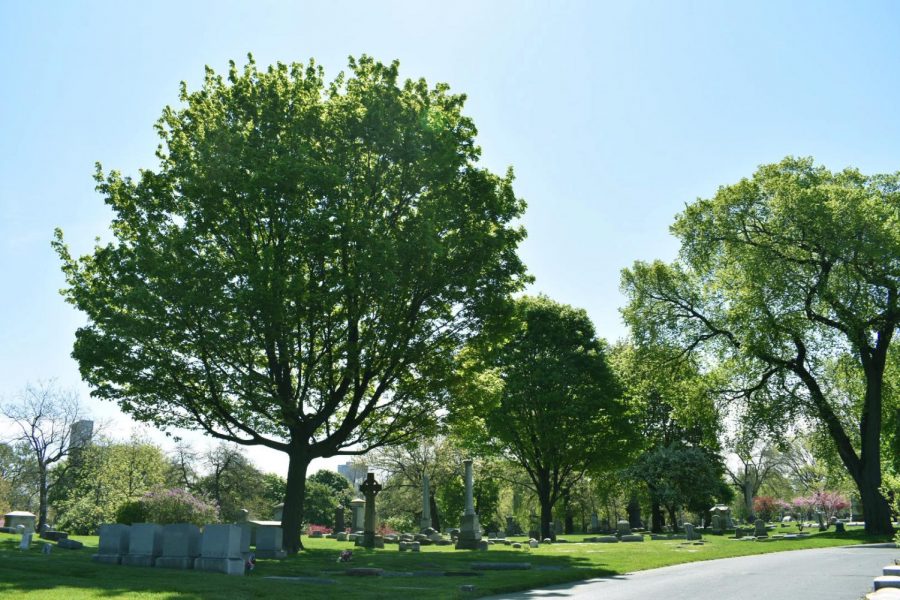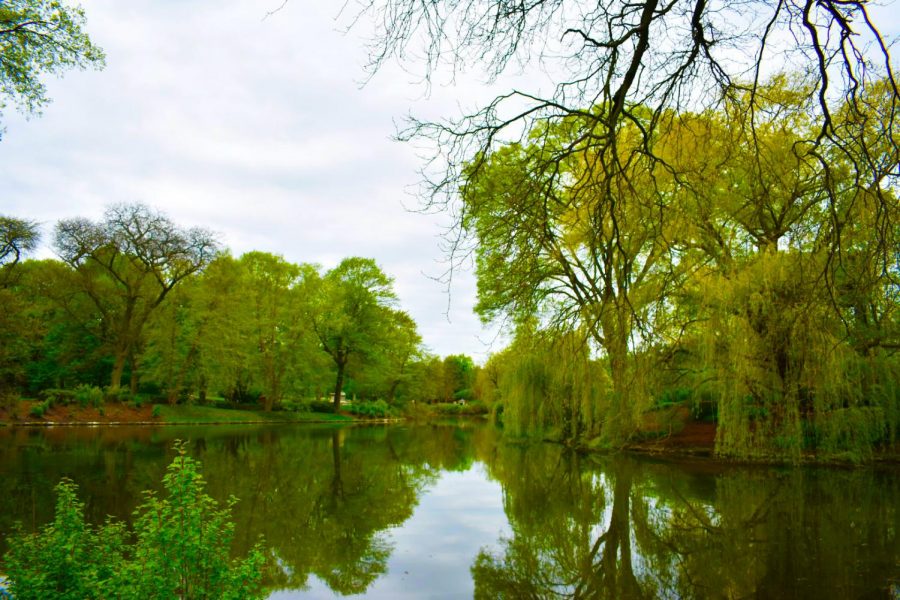With plenty of benches and shade from trees, the South Winter Garden is a perfect place to sit and take a break.
Take our social distancing friendly walking tour of Chicago’s neighborhoods
June 1, 2020
Throughout the stay-at-home order, many students chose to stay in their homes for periods much longer than they normally would have. Here is our guide to making the most of summer whether and discovering the hidden gems of Chicago neighborhoods.
Hyde Park
Found on the south-side of Chicago, this historic neighborhood is home to many
U-High students as well as the University of Chicago’s campus, including the Laboratory Schools. The neighborhood is dense with historical, architectural, and nature sites, making it so that there is always more to discover. Hyde Park is extremely accessible, right off of Lake Shore Drive, and with more than 10 CTA bus routes running through it. On your walk around the neighborhood, make sure to stop at Medici on 57th, a favorite of many locals, for a coffee and a snack.
Structures
Henry Moore Nuclear Energy Sculpture – HIS
5625 S. Ellis Ave.
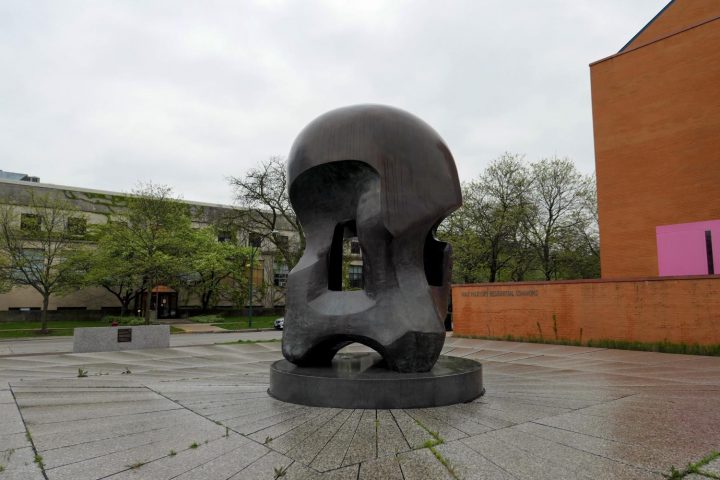
Located between the bright-bricked Max Palevsky Dorms and the glassy dome of Mansueto Library, the bronze statue commemorates the exact location where the Manhattan Project produced the first human-made self-sustaining nuclear chain reaction in 1942. The statue was unveiled on Dec. 2, 1967, after four years of construction, precisely 25 years after the discovery. When visiting the statue, make sure to view it from multiple angles to make out the multiple images represented in the complex bronze figure.
Obama Kissing Rock
5285 S. Dorchester Ave.
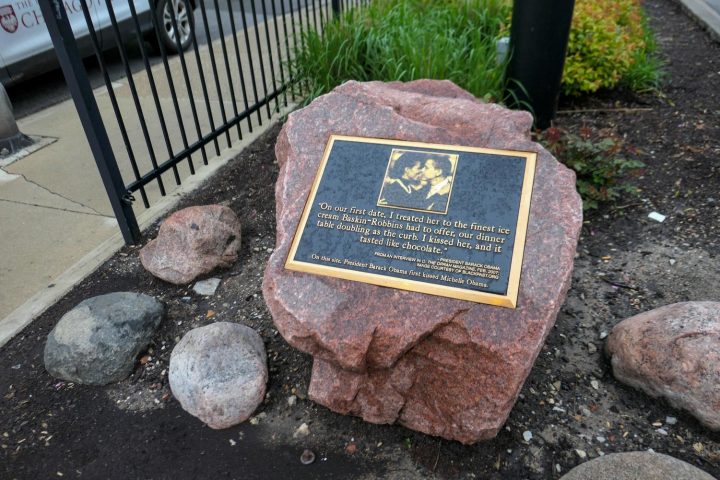
Hyde Park residents take pride in the fact that former President Obama’s family lived in the neighborhood before his two terms, but many pass by this little gem every day without knowing what it is. The 3,000-pound rock was installed by the Dorchester Shopping Center in 2012 to commemorate the spot Barack and Michelle had their first kiss.
“On our first date, I treated her to the finest ice cream Baskin-Robbins had to offer, our dinner table doubling as the curb. I kissed her, and it tasted like chocolate,” reads the metal plaque on the boulder, a quote from an interview with Obama and O, the Oprah Magazine, back in 2007.
Shoreland – HIS
5454 South Shore Dr.
The Shoreland’s neoclassical building stands elegantly directly in front of Promontory Point. Before the massive building served as a luxury apartment building with 330 apartment units, it was used as dormitories by University of Chicago for 32 years, and before that, it was one of Chicago’s most glamorous hotels. The Shoreland, after opening in 1926, hosted many famous figures including Elvis Presley, Amelia Earhart, and Al Capone.
Fountain of Time
6000 S. Cottage Grove Ave.
The fountain’s figures stand on the west end of the Midway bordering Washington Park. The concrete fountain was dedicated in 1922 after more than a decade of effort by Lorado Tuft, the artist behind the statue, as part of his “Midway Beautiful” initiative. The fountain is 120 feet wide and should be looked at from across the street from the statue to get a full view of the statue at the Dr. Allison Davis Garden.
Buildings
Cobb Hall
5811 S. Ellis Ave.
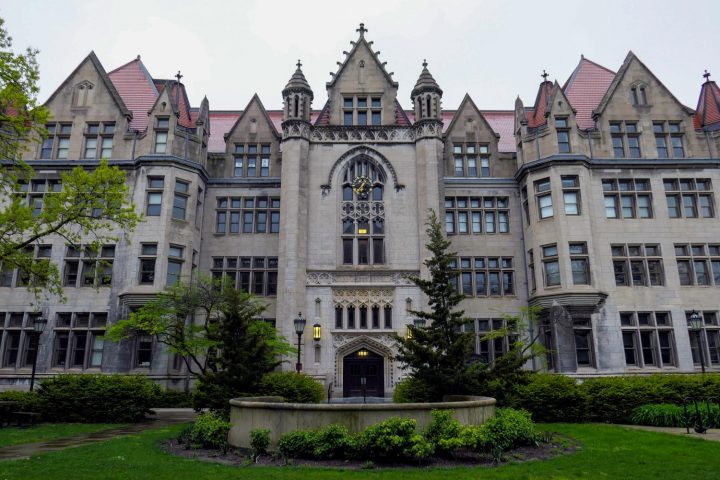
Cobb Hall’s gothic architecture is quintessential of the University’s look. When University of Chicago held its first classes on October 1, 1892, Cobb Hall was the first building that had been completed. Out of the 16 original buildings constructed by University of Chicago, it was the most expensive. When visiting the building, make sure to check out the C Bench which sits directly in front of Cobb.
Keller Center
1307 E. 60th St.
Located on the south side of the Midway, the Keller Center houses the Harris School of Public Policy. The building was renovated recently in 2018 since being built originally in 1963 by architect Edward Durell Stone. The limestone facade has decorative tracings that should be approached when viewing.
Isidore Heller House
5132 S. Woodlawn Ave.
Built in 1896, this is the famous architect Frank Lloyd Wright’s only other building in Hyde Park beside the Robie House. Wright designed the home for Isidore H. Heller, an Austrian businessman, who lived there with his family for 16 years. The house strays from Wright’s earlier designs that were defined by square plans and features three stories.
Laird Bell Law Quadrangle
1111 E. 60th St.
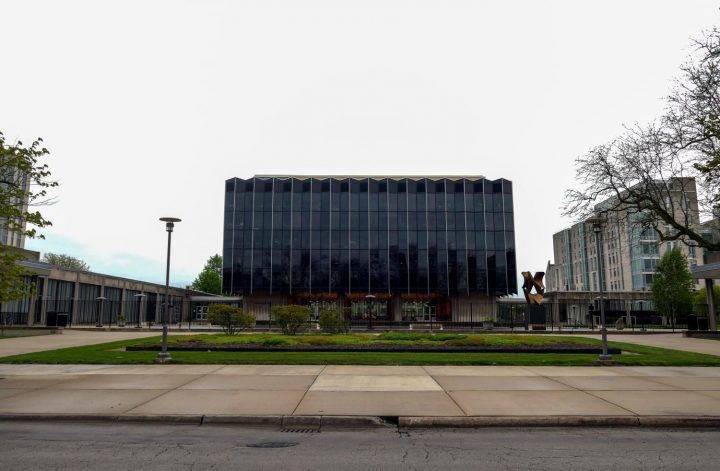
The mid-century modern building is home to the University of Chicago Law School and is situated south of the Midway. Designed and constructed in the 1950s by renowned architect Eero Saarinen, the building was completed in 1960. The limestone featured on the law school’s facade is the same Indiana limestone used for the University’s gothic buildings. The school also has many notable alumni including Mayor Lori Lightfoot and Senator Amy Klobuchar.
South Campus Chiller Plant
6053 S. Woodlawn Ave.
Tucked away next to the Metra train tracks, this shiny modern rectangle is a striking contrast from its dark bricked predecessor, the old University of Chicago Steam Plant. The plant was completed in 2010 and was designed by architect Helmut Jahn. Even the parts of the building’s facade that aren’t glass, use perforated steel sheets to allow the building to “breathe.” The unique design showcases the function of the building, which is to generate chilled water and steam for the south and east sides of the university campus. The water plant has received awards from the American Institute of Architects, AIA Chicago, the Chicago Architecture Foundation and McGraw Hill.
Parks
Midway Plaisance South Winter Garden
E. 60th Street and S. Woodlawn Avenue
This little garden is situated on the Midway across from the University of Chicago Law School. With an abundance of benches and trees for shade, this is a perfect spot to just sit and rest. The garden is also near the midpoint of the Midway, making it even more ideal for a little rest stop.
Botany Pond
1103 E. 57th St.
Botany Pond is a favorite among Hyde Park locals for a reason. Many Lab students have visited the little corner, nestled between Zoology Building and the Erman Biology Center, with their classes to observe nature and get some fresh air. Look out for Honey, the beloved duck that resides at the pond with her ducklings.
Washington Park
5200 S. Cottage Grove Ave.
This 350-acre park borders the west side of Hyde Park and features a large nature area, a garden and an arboretum. The park was designed by Olmsted and Vaux in 1870 and construction began in 1872. Since then, numerous additions have been made including the DuSable Museum, the Walter H. Dyett High School for the Arts and the Washington Park Pool.
All images from this chapter taken by An Ngo.
Northside
Chicago’s Northside is home to Wrigley Field, several beautiful parks and, of course, many U-High students. When wandering the neighborhoods, be sure to check out the Graceland Cemetery and Arboretum, an especially beautiful place for a stroll on a sunny day. Stop for a bite to eat or a cup of joe at The Coffee and Tea Exchange, a local cafe that has safely adapted social distancing procedures.
Victory Gardens Theater, or the Biograph Theater
2433 N. Lincoln Ave.
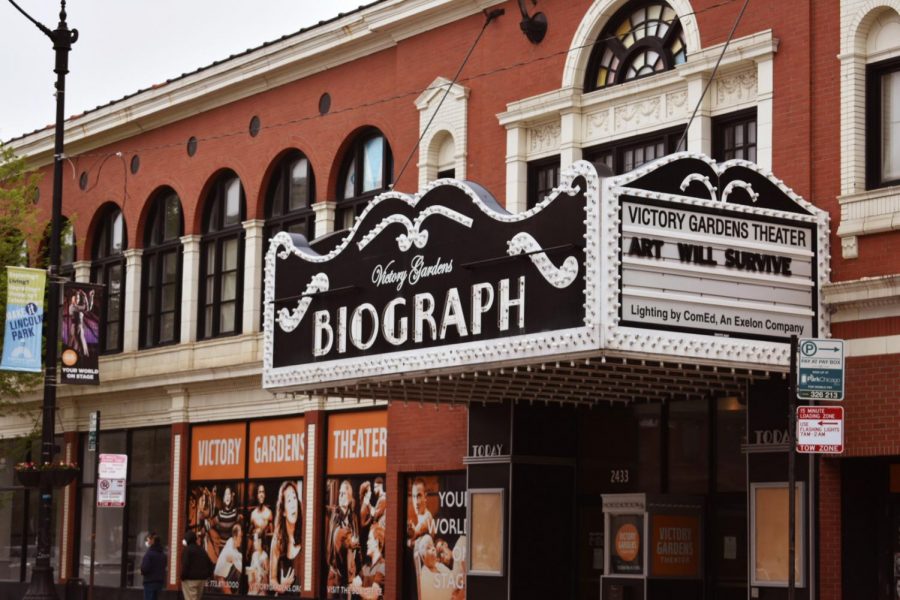
Walking down Lincoln Avenue, it’s difficult not to notice the old-fashioned canopy marquee of the Biograph Theater. The theater is best known for being the site of infamous Chicago gangster John Dillinger’s demise. The theater is also one of Chicago’s oldest, having first opened its doors in 1914. The Biograph has since undergone renovation to present live shows rather than movies, but its classic look has been preserved.
Emerald City Gardens – Oz Park
601 W. Webster Ave.
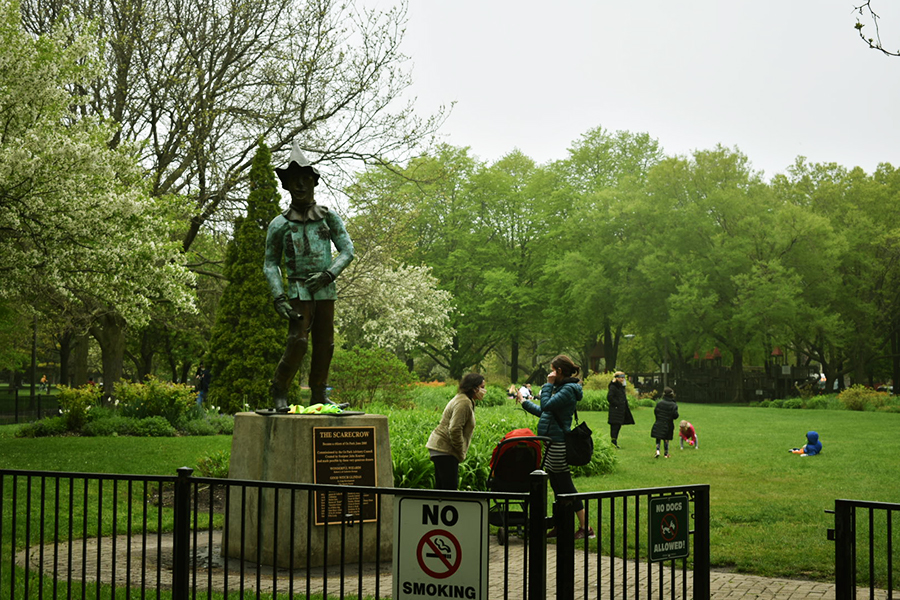
Oz Park’s perennial gardens are a quiet and pretty place to enjoy nature somewhere over the rainbow.
St. Michael’s Catholic Church in Old Town
1633 N. Cleveland Ave.
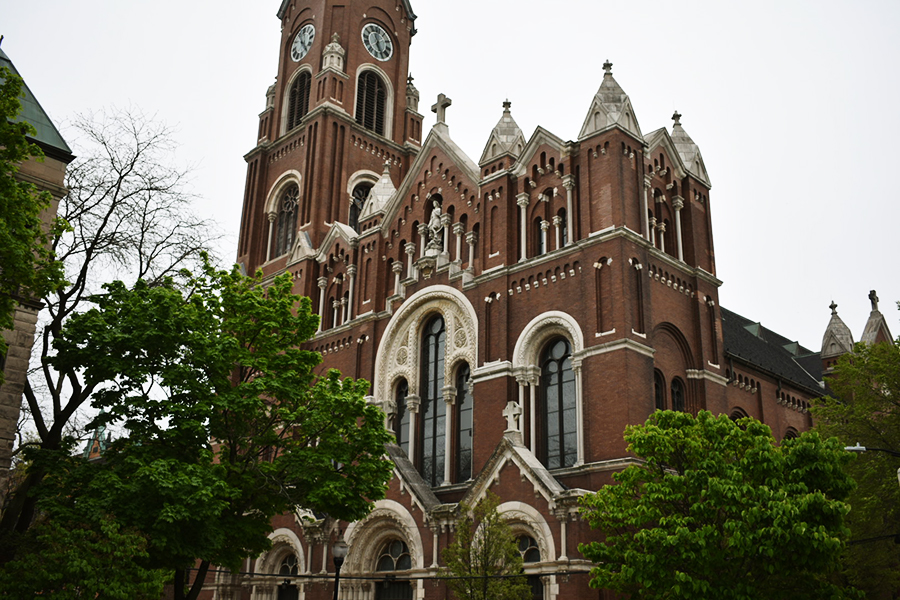
The dramatic arches of St. Michael’s are a grand and unexpected sight in the middle of the city. It was originally built by German Catholic immigrants in Chicago’s Old Town. The Victorian church, completed in 1896, is one of the only buildings in the area to survive the Chicago fire. According to the church’s website, at the time of its completion the 200-foot-tall steeple made the church one of the city’s tallest buildings. When visiting St. Michael’s, take time to look around the neighborhood as well, as Old Town is home to several other historical sites.
Mid-North Park
401 W. Belden Ave.
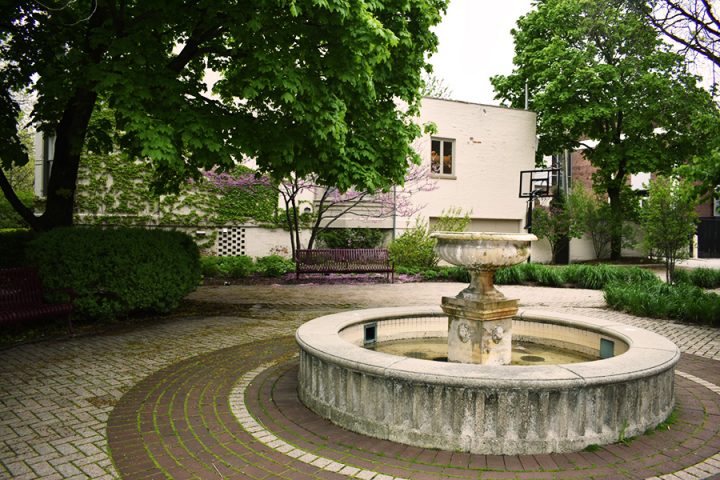
Mid-North Park is a bright spot of green in the middle of Lincoln Park. The park, consisting only of four benches overhung with trees and surrounding a fountain, may not be big, but it’s the perfect place to spend some time with a good book and a reliable face mask.
The Dewes House
503 W. Wrightwood Ave.
The Dewes House, adorned with two crumbling statues greeting visitors at the door, looks like a place out of time. Built in 1896 for millionaire Francis Dewes, the mansion is an example of German Baroque architecture, a style characterized by its ornate designs. Fun fact: the figures holding up the balcony are Greek architectural features known as caryatids, statues of draped women that double as structural supports.
Graceland Cemetery
4001 N. Clark St.
Elegant gravestones and pastoral greenery dot the grounds of the Graceland Cemetery. The cemetery, established in 1860, is a certified arboretum with over 2,000 trees within its gates. Wanderers might stumble across a small lake, unique monuments and the graves of historically significant Chicagoans.
The Music Box Theatre
3733 N. Southport Ave.
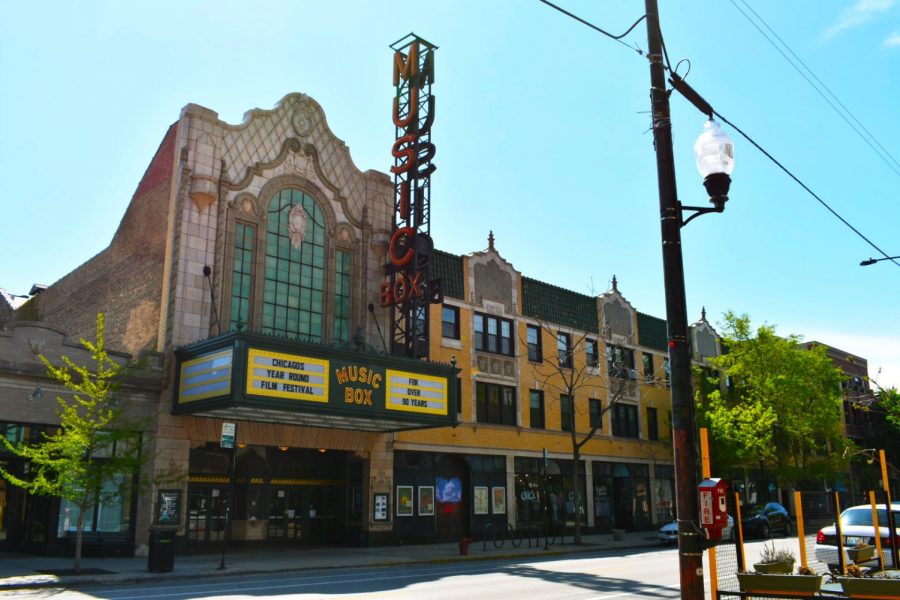
This atmospheric-style theater has been a fixture of Lakeview since its opening night in 1929. If you stop by, look out for “Whitey,” the Music Box’s resident friendly ghost. When you get home, check out the theatre’s virtual cinema.
Temple Sholom
3480 N. Lake Shore Dr.
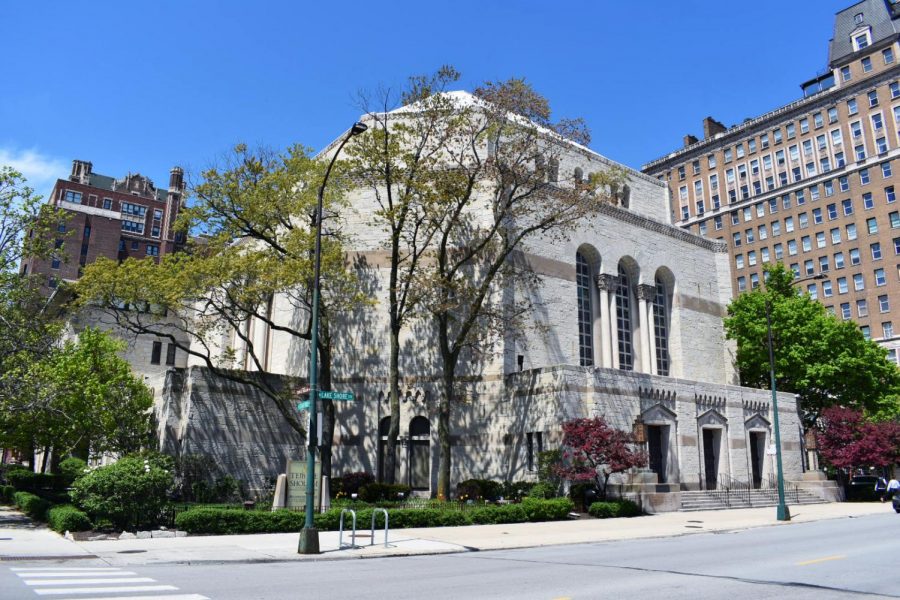
The lakefront synagogue has housed Temple Sholom’s Reform Jewish congregation since 1928, but the congregation predates the building by over half a century, being one of the city’s oldest. While services and community programming have been moved online, the synagogue’s large Byzantine style dome and ornate Moorish Revival exterior make the building’s architecture a destination of its own.
The Coffee and Tea Exchange
3311 N. Broadway
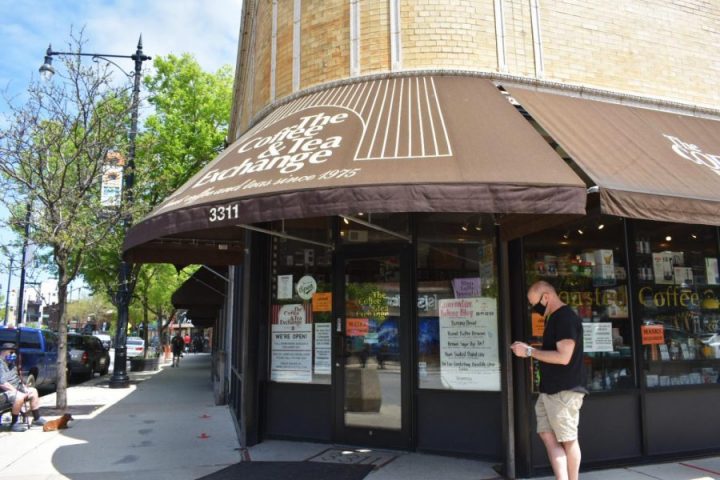
For those missing their morning caffeine fix but nervous about safety, this shop is the place to go. The Coffee and Tea Exchange has taken every precaution to allow patrons to grab a drink safely; face masks are required, only one customer is allowed to enter the store at a time and those waiting to enter must maintain distance, as guided by lines of red tape.
The Legacy Walk
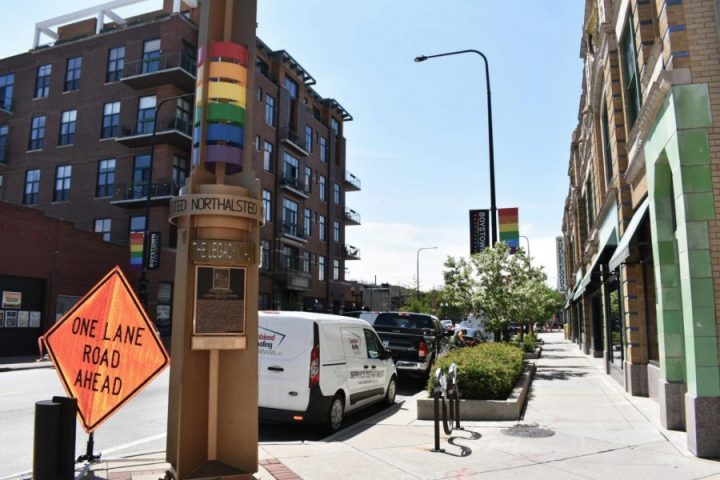
Running through the heart of Chicago’s Boystown, The Legacy Walk commemorates LGBTQ+ historical figures with monuments lining the North Halsted Corridor from Belmont to Grace. The Legacy Walk is part of the Legacy Project, a non-profit organization that brings light to LGBTQ+ contributions to history. According to the project’s website, the walk is the world’s largest LGBTQ+-focused historical landmark. Take time to read each of the monuments’ bronze plaques, forty in total, to learn about the lives of these individuals.
All images from this chapter taken by Caroline Hohner.
Downtown
Downtown is the center of Chicago, resplendent with towers, parks and museums. While its attractions are closed during the pandemic, downtown’s architectural and historical places of interest are still worthy of being visited. The “Loop” of downtown is the loop formed by the intersecting tracks of the “L” transit system, so almost everywhere in downtown is easily accessible by train. Downtown coffee shops like the Dollop Coffee Co. and Fairgrounds Coffee & Tea are still open for takeout.
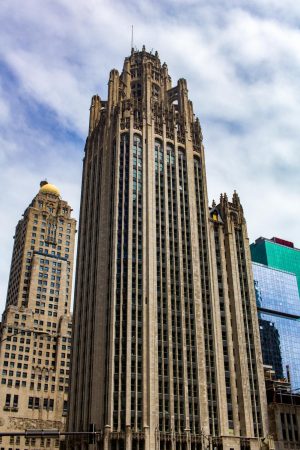
Tribune Tower
While the most striking features of the Tribune Tower may be its ornate limestone arches, the building also boasts a unique historic feature closer to eye-level: stones from historic sites all around the world rest in the building’s foundation, with inscriptions marking their origins for curious passersby. Some notable examples include a brick from the Great Pyramid of Giza, the Great Wall of China and the Taj Mahal.
Wrigley Building
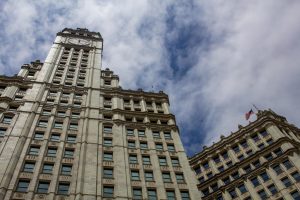
The Wrigley Building is one of Chicago’s premier downtown architectural highlights and acts as an office building. It was constructed in 1924 for the Wrigley Company. The luminous white exterior is the product of its glazed terra-cotta facade.
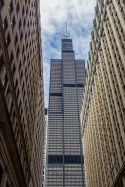
Willis Tower
The Willis Tower is a popular tourist attraction and Chicago’s tallest building. At its construction, few towers exceeded 20 stories in Chicago. It held the title of tallest building in the world for 25 years and was among the first buildings to employ a tubular support system. This is visible as the nine vertical blocks that comprise the body of the tower and lend its distinctive shape.
Flamingo
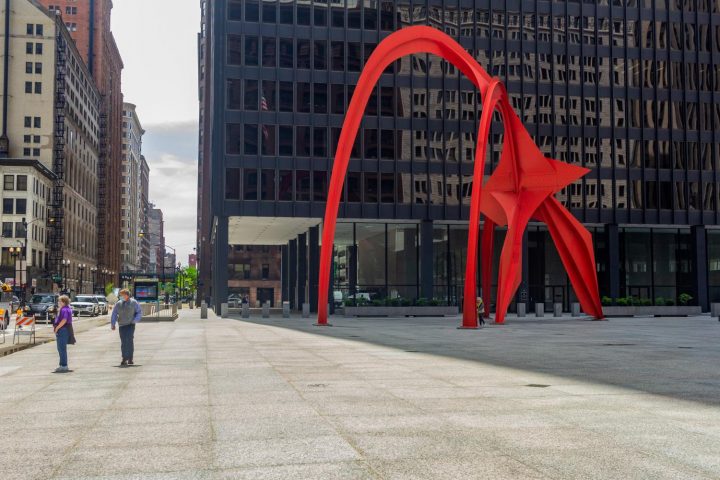
Alexander Calder’s Flamingo sculpture is a 53-foot work of steel, famous for its vermillion color, scale and its position between large Mies van der Rohe designed buildings in downtown Chicago. Calder built the structure in 1973 out of a series of smaller steel pieces in the constructivist style, accumulating a total weight of 50 tons.
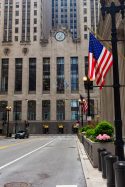
Chicago Board of Trade
The Chicago Board of Trade is an art-deco tower that hosts the derivatives exchange and the Chicago Mercantile Exchange. The building has appeared frequently in popular culture through franchises like Batman and Transformers. Sculptor John H. Storrs created the statue at the top as a representation of Ceres, goddess of grain, from forty distinct pieces with a total weight of 6,500 pounds.
Art Institute
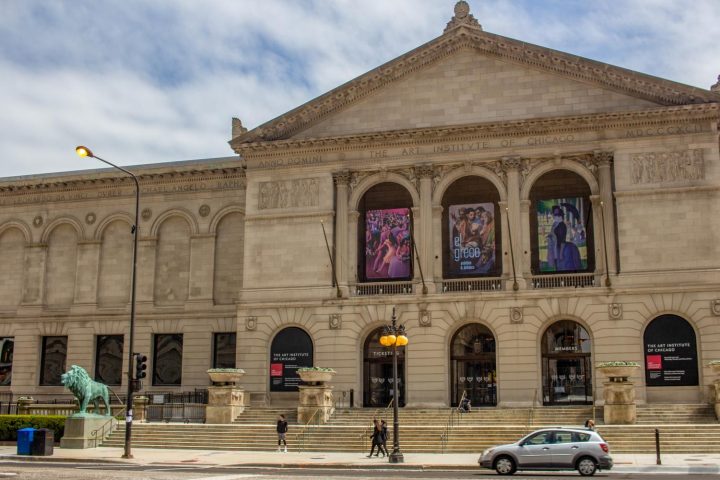
The Art Institute is Chicago’s main art museum and features works from every art period. Although it is closed during the pandemic, visitors can still admire the arcaded loggia of the beaux-arts building and the glass exterior of the modern wing. Notable are the museum’s twin lions that stand at the entrance.
